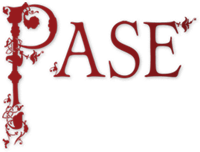Table of Contents
Top of page
Name
Summary
Distribution Map
Property List
Profile
Bibliography
Bottom of page
Mærwynn 3
Mærwynn ‘of Elsenham’ (Essex), fl. 1066
Female
DWP
4 of 5
Summary
Mærwynn 3 was a free woman with a manor in north-west Essex TRE assessed at 4 hides and with a value of £6.Distribution map of property and lordships associated with this name in DB
List of property and lordships associated with this name in DB
Holder 1066
| Shire | Phil. ref. | Vill | DB Spelling | Holder 1066 | Lord 1066 | Tenant-in-Chief 1086 | 1086 Subtenant | Fiscal Value | 1066 Value | 1086 Value | Conf. | Show on Map |
|---|---|---|---|---|---|---|---|---|---|---|---|---|
| Essex | 65,1 | Elsenham | Meruena | Mærwynn 'of Elsenham' | - | John nephew of Waleran | - | 4.00 | 6.00 | 8.00 | B | Map |
| Totals | ||||||||||||
Profile
Mærwynn 3’s manor was at Elsenham in north-west Essex, in what was then the most wooded part of the county and where several streams drain westwards towards the River Stort. She was described in DB as a ‘free woman’ and so presumably held the land in her own right rather than as a dependent tenant; her commended lord is not given.As well as recording the resources of the estate in 1086 DB also provides some details of Mærwynn’s TRE estate. She had a mix of arable and pastoral agriculture, with two ploughs on her demesne and seven among her dependent peasants (who comprised the households of eight villans and one bordar, along with five slaves) as well as sheep, cattle and pigs. She also had a mill and a substantial area of woodland, although Doubleday and Page (1903: 377) point out that the DB figures suggest that nearly a quarter of this was cleared during the twenty years after the Conquest.
Given her uncommon name and the moderate size of Mærwynn 3’s estate it is conceivable that she might also hold an estate 38 miles away and so be the same as Mærwynn 6, who held land in west Bedfordshire TRE; but the very small size of Mærwynn 6’s estate renders this highly unlikely. The other estates held TRE by women called Mærwynn lay at least 75 miles away from Elsenham and no connection between them need be considered.
Bibliography
Doubleday and Page 1903: A History of Essex: Volume I, ed. H. A. Doubleday and W. Page (London, 1903)
